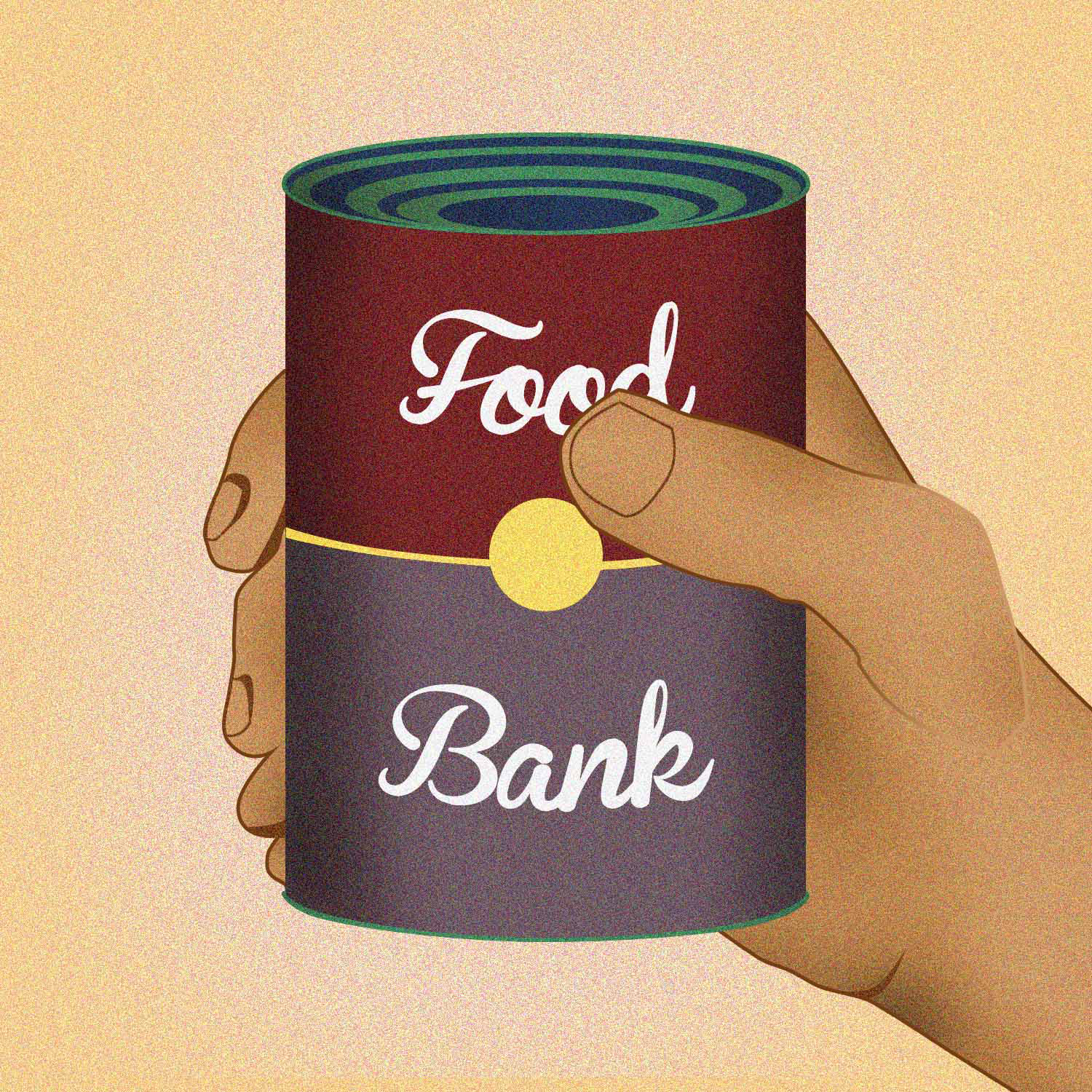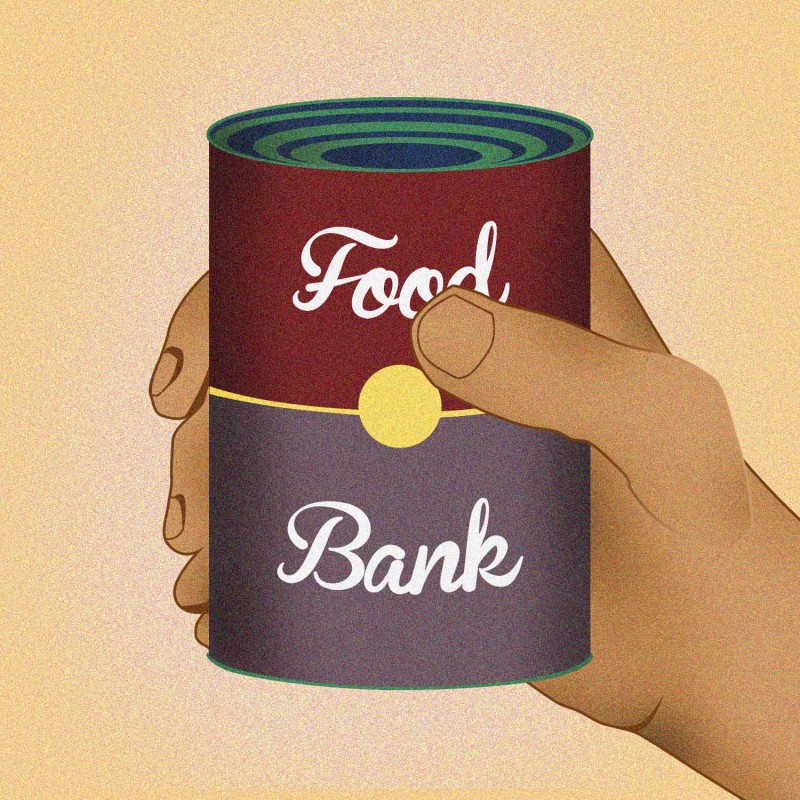An international state of affairs: examining the food bank crisis


“58,000 individuals visited the foodbank more than 450,000 times last year” said Kim Wilhelm, Interim CEO of The Waterloo Food Bank. “That’s just in the region [of waterloo].”
Subconsciously, most of us are aware that there is, to some degree, a food crisis.
As the holidays approach, so do donation bins at schools, cardboard containers in the check-out sections of big box stores and collection crates in the lobbies of condos and hotels.
Sometimes they’re full, sometimes there’s just some food lingering sporadically at the bottom.
The latter has become a more common reality – today, individuals accessing food bank services drastically outpace donations.
Many people’s lives have shifted as they grapple with the fallout from the pandemic.
Some were forced to rely on food banks for the first time ever, this is what Wilhelm calls the “new household” phenomenon which is the “largest demographic we were really concerned about,” said Wilhelm.
The Food Bank of the Waterloo Region is primarily community funded, receiving a small portion of additional funds from the region of Waterloo.
“We don’t receive anything from the Ontario or federal government,” said Wilhelm, who was hopeful but forthcoming about a potentially bleaker future for food banks.
Abigail had the opportunity to volunteer at The Food Bank of Waterloo warehouse, and in all honesty, and rather shamefully, it had not occurred to her that demand was so high until then.
The experience opened her eyes to the magnitude of produce required to keep homes afloat – and the scale of planning, manpower, goodwill and effort required to service the region. It was both remarkable and devastating.
There is a tremendous amount of technical work behind the scenes, and Wilhelm stressed that the food bank continues “to be at capacity with the complicated logistics involved.” For food bank workers, every day is Prime Day.
Despite Canada’s stereotypical kindness, it’s impossible to ignore the growing resentment that has been brewing beneath the surface of well-intentioned generosity in conjunction with struggles faced by the working class.
Food banks require an all-hands-on deck approach, but they can’t function properly if everyone isn’t on the same page.
In November, news broke that a food bank in Brampton had closed its doors to international students due to an increase in demand it could no longer keep up with.
Since then, people have been pointing to videos online of international students with captions (some including the laughing face and money-mouth face emoji) like “Free Free Free Free food in Canada”, “Shopping done for 0$ International student can get this” and “Why spend 100’s of dollars in grocery when you can get it for free (weekly grocery)”, suggesting that some may be taking advantage of the system.
The message conveyed by some international students when they make these videos about food banks is they’re a free-for-all. But in reality, they don’t receive nearly enough donations to match the spiking demand.
This type of content overshadows the positive videos spreading awareness about resources for those in dire need.
The number of Canadian citizens being impacted by the government’s poor legislation and policies on food, housing and labour is growing.
In a report released in 2022 by the University of Toronto, it was discovered that 18.4% of people across the ten Canadian provinces were dealing with food insecurity.
With an apparent lack of action on these issues, it seems the government has other interests, such as increasing immigration numbers. Refugees and Citizenship Canada (IRCC) reveals a whopping 75 per cent increase in International Student Study Permits from five years ago.
Amid rising concerns about affordability and accessibility of many basic necessities, Immigration, Refugees and Citizenship Canada forecasts that by 2027 the volume of applicants is supposed to hit 1.4 million newcomers.
On Oct. 23, Laurier released a press statement saying that they are dedicated to “ensuring international student growth is sustainable, ethical, and aligned with the student experience the university is known for,” will this truly be reflected?
A few days later, a news release posted by the Government of Canada notes the “opportunities to work or immigrate permanently after graduation.”
The Government of Canada also recognizes how many students have “experienced some serious challenges navigating Canada’s International Student Program.”
One of these challenges includes navigating fraud.
Studying in Canada as an international student is very expensive, and for some students, their only chance at acceptance is to take out a loan to falsify proof that they have the financial requirements to get into a program.
Many don’t actually have the funds to support themselves beyond the initial stamp of approval. Once they move here, international students must pay back the loan.
“Diploma mills” have been contributing to serious issues for international students and have been documented regarding the terrible end result (often, homelessness and deportation).
CBC’s Fifth Estate featured their undercover investigative film Sold a Lie (2022) that explored the predative incentives of Ontario colleges that depend on foreigners to enroll at private affiliates (institutions) to generate tens of millions in tuitions revenue, a far cry from the advertised dream of building a life here.
According to Engineers Canada, a diploma mill “sells academic degrees, diplomas, and transcripts to individuals without providing educational experience and without being recognized by an educational accrediting body.”
In an article released by CTV News Toronto on June 14, it was revealed that “roughly 700 Indian students and graduates, most of whom hail from Punjab state” were facing deportation “in connection with international study permit application scams.”
This was recognized in a statement from the Honorable Sean Fraser on June 14.
“All applicants must continue to ensure that, before applying for a study permit, they do their research, have an acceptance letter from a DLI, and refer to the official website to get information about our programs,”
Sean Fraser
This is a multi-faceted issue that food banks and universities cannot solve on their own, the federal and provincial governments need to step in to make significant changes.
Even donating to food banks has become more difficult.
“With food prices high, we aren’t getting the same level of food donations,” said Wilhelm.
But, if you have the ability to donate, Wilhelm emphasized that canned fruits, vegetables, meat, fish and rice — preferably low sodium are the best donations. Pet food is also accepted.
“This year will be challenging because we have the volume to compete with,” said Wilhelm. “While I can try to visually explain, until you actually for yourself come into the building and see what we do every day it’s just not the same.”


